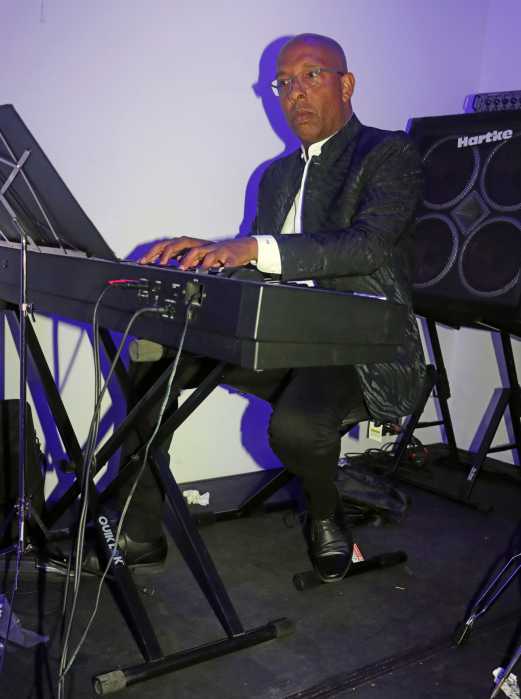Associated Press
SAN JUAN, Puerto Rico (AP) _ An explosive eruption rocked La Soufriere volcano on the eastern Caribbean island of St. Vincent on Friday after the government ordered thousands to evacuate their homes nearby.
Experts said the ash column rose more than 20,000 feet (6 kilometers) high and that the majority of the ash was headed northeast into the Atlantic Ocean.
However, heavy ashfall also was reported in communities around the volcano and beyond, with authorities saying some evacuations were limited by poor visibility.
Several flights also were canceled and islands including Barbados, St. Lucia and Grenada prepared for light ashfall as the 4,003-foot (1,220-meter) volcano continued to rumble. Authorities reported a second, smaller explosion on Friday afternoon.
“More explosions could occur,“ Erouscilla Joseph, director of the University of the West Indies Seismic Center said in a phone interview, adding that it was impossible to predict whether they might be bigger or smaller than the first or second one.
There were no immediate reports of casualties from the eruption that occurred four days short of the 42nd anniversary of the last sizable eruption.
In the coastal town of Barrouallie, about 14 kilometers (9 miles) from the volcano, evacuees trudged toward shelters carrying backpacks, duffel bags and shopping bags stuffed with personal belongings after the explosion. Some prepared to stay there, while others were expected to board cruise ships or go to nearby islands that have offered help.
Others still waited for transportation to a shelter, including one family who stood for at least an hour by the side of a road under the sun with their children and suitcases as they awaited a ride from someone.
The volcano last erupted on April 13, 1979, and a previous eruption in 1902 killed some 1,600 people.
The new eruption followed mandatory evacuation orders issued Thursday for the roughly 16,000 people who live in the red zone near the volcano in the island’s northern region. More than 2,000 people were staying in 62 government shelters.
“We have had hiccups here and there … but by and large we are proceeding pretty well,” Prime Minister Ralph Gonsalves said in a press conference. He later wiped tears from his eyes and apologized for crying while he thanked people and other governments in the region for opening their homes and countries to St. Vincentians.
“On the dangerous road to Jericho, we have the good Samaritans,” he said.
He said that depending on the damage done by the explosion, it could take up to four months for things to go back to normal.
As dozens of people streamed toward safer ground, officials worried the pandemic could hamper evacuation efforts.
Gonsalves said people have to be vaccinated if they go aboard a cruise ship or are granted temporary refuge in another island. He said two Royal Caribbean cruise ships and two Carnival Cruise Lines ones arrived Friday. Islands that have said they would accept evacuees include St. Lucia, Grenada, Barbados and Antigua.
He said he was talking to Caribbean governments to accept people’s ID cards if they don’t have a passport.
“This is an emergency situation, and everybody understands that,” he said.
Gonsalves added that he highly recommends those who opt to go to a shelter in St. Vincent and the Grenadines, an island chain of more than 100,000 people, be vaccinated. Authorities said those staying in shelters would be tested for COVID-19, and that anyone who tests positive would be taken to an isolation center.
Emergency management teams have been going out to communities in the red zone and providing transportation to safer locations, including prearranged shelters, according to Joseph.
By late Thursday evening, shelters were filling up as a string of car lights making their way to safer ground twinkled through the darkened mountains.
John Renton, a school principal who was in charge of one shelter, said in a phone interview that they had plenty of masks and other personal protective equipment but needed more cots. While talking, he was interrupted by a phone call from a government official asking about the state of things. “We’re over capacity,” he responded, noting that the shelter could hold 75 people and was already filled up.
Meanwhile, the government warned of water shortages given that people were stocking up after the alert was issued.
Scientists alerted the government about a possible eruption after noting a type of seismic activity at 3 a.m. on Thursday that indicated “magma was on the move close to the surface,“ Joseph said.
A team from the seismic center arrived in St. Vincent in late December after the volcano had an effusive eruption. They have been analyzing the formation of a new volcanic dome, changes to its crater lake, seismic activity and gas emissions, among other things.
Seventeen of the eastern Caribbean’s 19 live volcanoes are located on 11 islands, with the remaining two underwater near the island of Grenada, including one called Kick ‘Em Jenny that has been active in recent years.
The region’s most active volcano in recent years has been Soufriere Hills in Montserrat, which has erupted continuously since 1995, destroying the capital of Plymouth and killing at least 19 people in 1997.



















